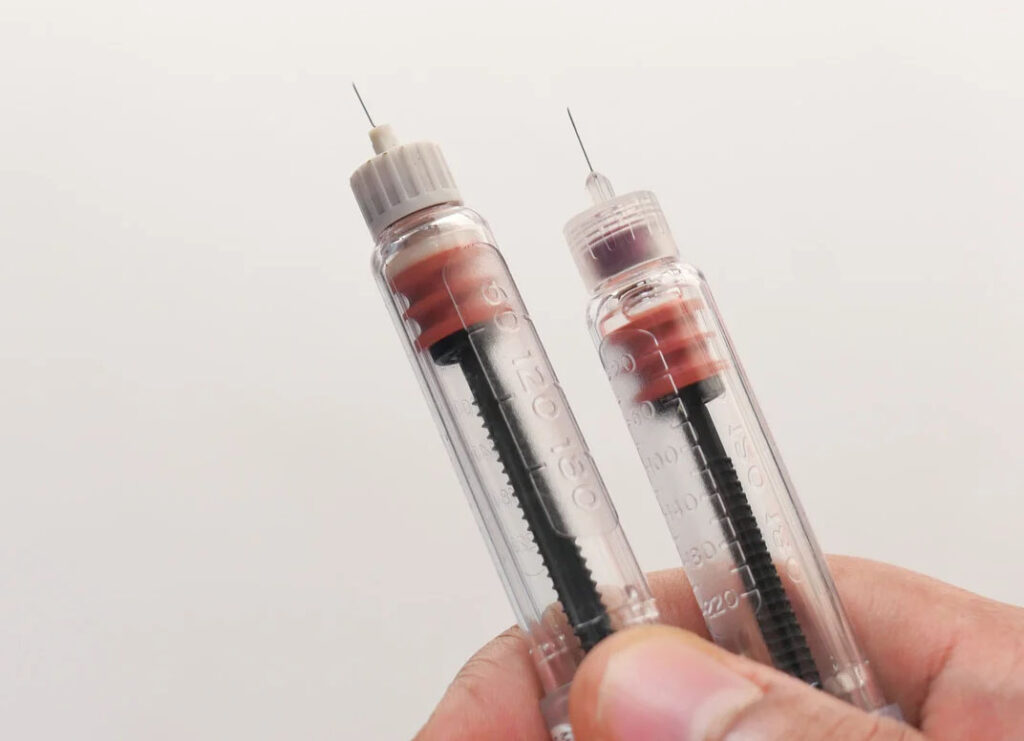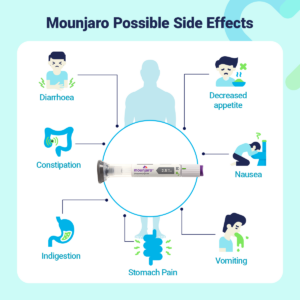GIP receptor agonists are a type of medication that interacts with your hunger hormones, and if you know a thing or two about weight management treatments that may be ringing a bell for you.
These new medications aren’t a million miles away from some of the weight loss injections that are available in the UK right now, so naturally, we’re very curious about what makes them tick.
We’re going to investigate what GIP receptor agonists are, how they work, and where they could fit amongst treatments for type 2 diabetes and obesity.
Keep reading to learn everything you’ll need to know about this latest weight loss medication development.
What is a glucose-dependent insulinotropic peptide?
Glucose-dependent insulinotropic peptide is a bit of a mouthful, which is why you’ll have heard it referred to as GIP. Much simpler, right?
GIP is a hormone produced in your body after you eat, and it helps insulin enter your bloodstream so it can keep your blood sugar levels in check.
There are a few hormones that have similar responsibilities in your body, and this group of hormones is called incretins.
Another, more widely known example of an incretin is GLP-1, which also interacts with your hunger hormones.
How do GIP receptor agonists work?
GIP receptor agonists work with your GIP hormone to encourage the production of insulin in your body, as well as increasing sensitivity to insulin itself.
As insulin is one of the hormones that control your appetite, increasing the amount in your system has a few benefits for certain patients.
In patients with type 2 diabetes, it helps to bring down blood sugar levels, especially when used alongside a GLP-1 agonist, which will increase insulin production.
It also reduces the production of stomach acid, so your food will be broken down more slowly in your stomach.
This essentially means that your stomach will be fuller for longer, and you’ll feel more satisfied after a meal.
With this in mind, we’ll probably see GIP agonists obtain licensing as weight management treatments in future, following a similar path to medications like Semaglutide and Liraglutide, which are both GLP-1 receptor agonists.
What is the difference between GIP and GLP-1 agonists?
The simplest difference between GIP and GLP-1 receptor agonists is that one affects your GIP hormones and the other effects GLP-1 hormones, but what does that actually mean for patients?
Well, they both affect your digestive system in different but complementary ways.
As we mentioned earlier, GIP agonists help to increase your insulin sensitivity, while GLP-1 agonists increase your insulin secretion.
Basically, you’ll be making more insulin and your body will be more receptive to it.
Another difference is how these medications affect your stomach itself, as GIP receptor agonists reduce the secretion of stomach acid whereas GLP-1 receptor agonists slow down stomach emptying.
This means that your food will be digested more slowly with GIP agonists, and it will leave your stomach more slowly with GLP-1 agonists.
Of course, there are more differences than just these two, but those are the most notable for patients wondering whether GIP receptor agonists will be used for weight loss in future.
Do GIP agonists help with weight loss?
GIP agonists can help with weight loss, especially when used alongside a GLP-1 agonist.
These two treatments complement each other well when used for either weight loss or type 2 diabetes.
This is why medications like Tirzepatide work as both GLP-1 and GIP receptor agonists — similar hormones, a similar method of action, and the potential for similar results in patients.
There aren’t any GIP receptor agonists licensed for weight loss in the UK or the US yet, but as Mounjaro has just been licensed for type 2 diabetes in the US, we may see it licensed as a weight management treatment relatively soon.
Is Tirzepatide (Mounjaro) a GIP agonist?
Yes, Tirzepatide, the active ingredient in Mounjaro, works as a GIP agonist and a GLP-1 receptor agonist.
This unique combination is sometimes referred to as a ‘dual agonist’ as it interacts with both your GIP and GLP-1 receptors.
At the moment, other weight loss injections on the market only work as GLP-1 receptor agonists, so the development of Tirzepatide as a dual agonist is big news in the medical world.
At the moment, Tirzepatide and Mounjaro haven’t been licensed in the UK for diabetes or weight loss, and there isn’t much information out there about the potential results this medication could have, but we’ll be here to reveal all the facts as they come to light.
Which medications are GIP receptor agonists?
GIP receptor agonists are a new treatment, so there aren’t many of them around yet.
At this point, Tirzepatide is the most notable of these drugs, as it’s the first one to make it to market in the US.
Although it isn’t licensed in the UK yet, that doesn’t mean we shouldn’t be very excited about this development.
Most new medications for type 2 diabetes and obesity have been licensed in the US first in recent years and the UK licenses usually follow fairly quickly.
Of course, there is a lot of testing that needs to be done before Tirzepatide or any other GIP receptor agonist will be licensed in the UK, so we don’t have an exact timeline of what’s going to happen and when.
Naturally, we’ll be here to keep our patients in the loop about any new developments as and when they happen.
Now we all know a lot more about GIP receptor agonists and what they do.
Hopefully, you’re as excited as we are to find out what happens next in the medication licensing game.
We’ll keep updating this article as more information is brought to light, so watch this space if you want to be in the know.
In the meantime, here are a few of our other most popular articles for you to check out.
They’re packed full of information about weight loss medications as well as tips and tricks to help you live a healthier life.


















